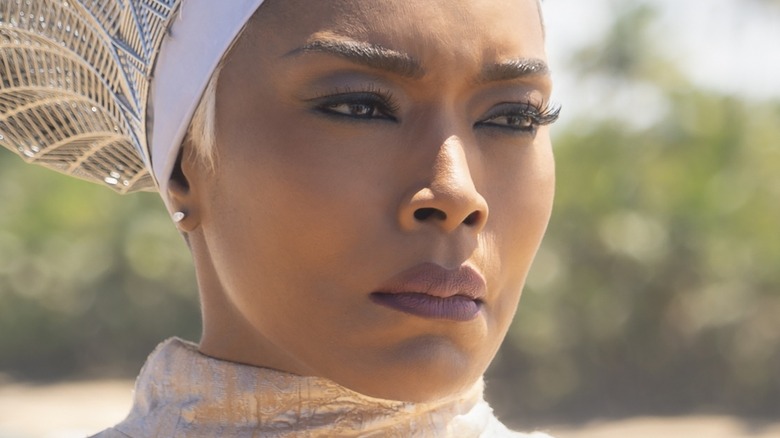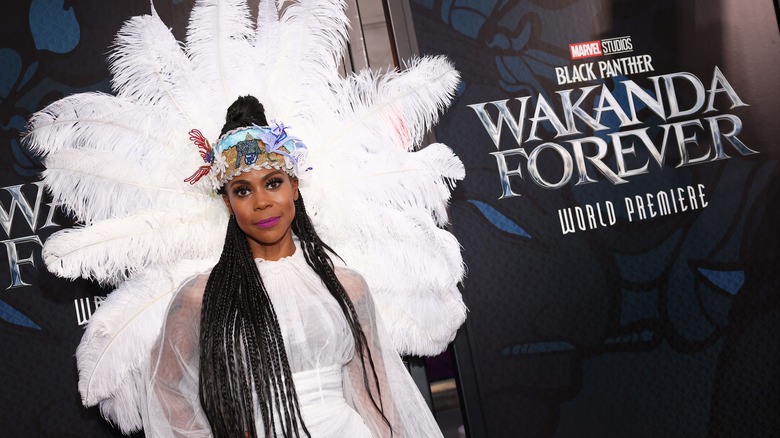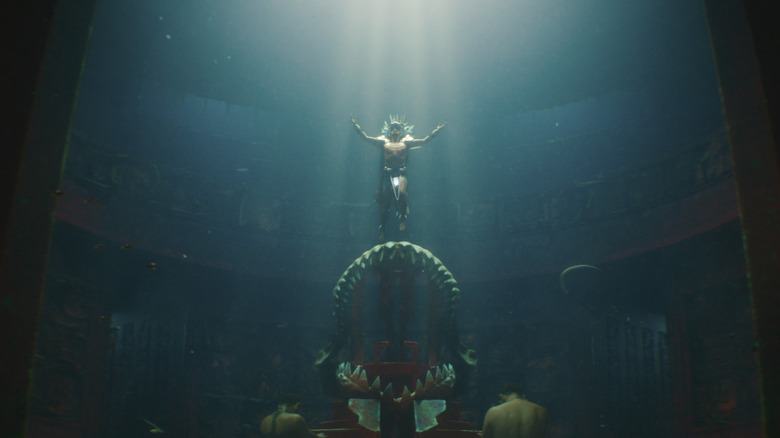Another 400 Pages Were Added To The Wakanda Bible For Black Panther: Wakanda Forever's Lore
The first "Black Panther" film brought Hannah Beachler in to design the world of Wakanda and bring it to life with costuming and set design. By all accounts, she was intensely devoted to the task, doing extensive research on Africa, technology, and the Marvel universe to create a 515-page document known on-set as the "Wakanda Bible" (via Bloomberg). The document clearly demonstrates how much care Beachler took with the project. A look at two pages from it that Beachler shared on Twitter reveals two maps: one of Wakanda and another of its capitol, the Golden City, both fully detailed and labeled. It's no wonder Beachler's work on "Black Panther" earned her an Oscar, making her the first Black woman to win in the production design category (via Vanity Fair).
When she returned to work on the sequel, "Black Panther: Wakanda Forever," alongside costume designer and fellow Oscar-winner Ruth E. Carter, Beachler had a new culture to explore and a new world to build with the introduction of Talocan, an underwater culture built by a few surviving descendants of ancient Mesoamericans and ruled by the mutant Namor (Tenoch Huerta). This time around, Beachler put just as much work into her designs and costumes, ultimately adding an additional 400 pages to the "Wakanda Bible" (via Ebony).
Production designer Hannah Beachler did intense research on Mesoamerica
For "Black Panther: Wakanda Forever," Hannah Beachler had a daunting task before her. She had to envision the way Talocan and its people would look, what cultural practices they would have, and, quite importantly, how all of that would work underwater. As Namor relays to Shuri (Letitia Wright) partway through the film, Talocan was created when his mother and her people escaped the horrors of colonization by drinking an elixir that turned them into water-breathing people of the sea. They brought their culture underwater with them and built a city there. Beachler approached Talocan with the same obsessive detail she did Wakanda.
Speaking to Ebony, Beachler talked about her research process and how the "Wakanda Bible" ballooned in size, saying, "Our underwater people are Talocan and they're inspired by ancient Mayans. I had to completely immerse myself 100,000 percent in talking to experts." Getting the culture right was of special importance to Beachler, who wanted it to feel just as rich and real as Wakanda. "I can't just throw up a culture," she said, "even if it's something that's specifically not that culture or inspired by that culture."
Talocan is just as rich a culture as Wakanda
While coming up with the production design for Talocan, Hannah Beachler had a unique challenge. Long periods of colonization and genocide destroyed a great deal of ancient Mesoamerican culture, a fact that "Black Panther: Wakanda Forever" even touches on while expositing Namor's backstory; to evoke an authentic-feeling offshoot of those cultures while creating Talocan could not have been easy. But for Talocan to seem as vibrant and realistic as Wakanda, Beachler dug deep into the scholarship and talked to experts. "You need to know the rules before you can break anything," she said. "You need to understand it before creating something that's an amalgamation of that or an evolution of that."
The result of Beachler's hard work and the 400 pages added to the "Wakanda Bible" are clearly visible in the finished product. From Ruth E. Carter's Talocan costume designs, which take inspiration from indigenous beadwork and other cultural artifacts, to the city of Talocan itself, which looks like a Mayan version of Atlantis, every part of Wakanda and Talocan feels at once ancient and futuristic, textured and vibrant. There's no denying that, just like in the first film, the production design is one of the best things about "Black Panther: Wakanda Forever."


